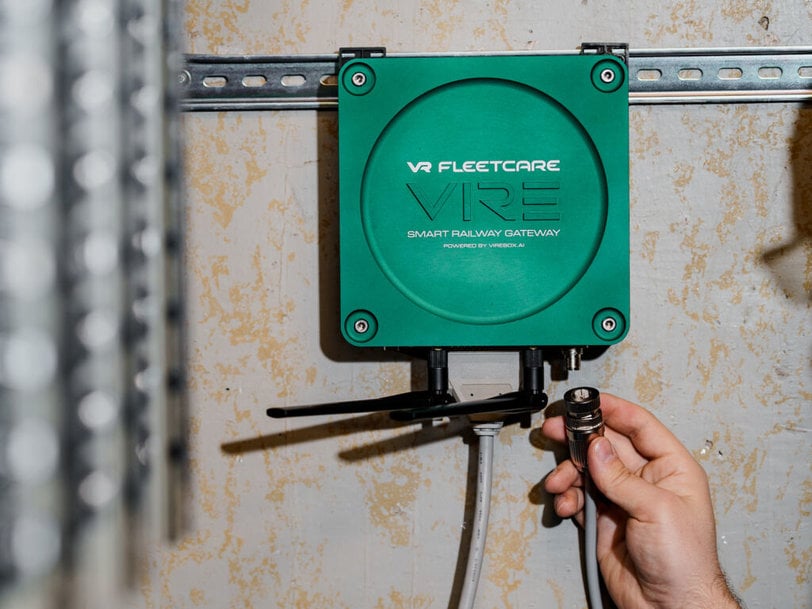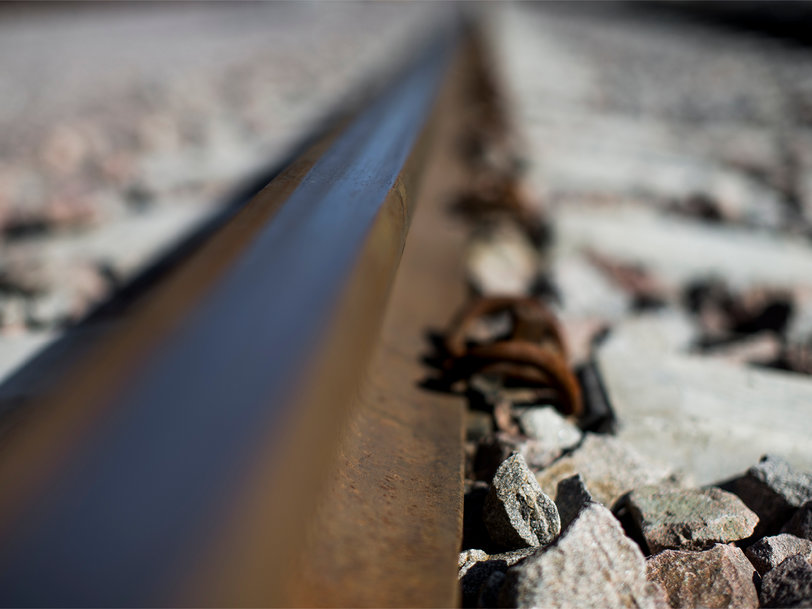railway-international.com
09
'22
Written on Modified on
VR Fleetcare: The Power of Digitalisation in Track Equipment Maintenance
The digital monitoring of track equipment makes it possible to carry out maintenance before a defect causes traffic disruption. There is increasing interest in the potential of condition monitoring to support railway asset management and maintenance.

The Finnish rolling stock maintenance company VR FleetCare, in co-operation with technical experts, data scientists and technology partners, has developed state-of-the-art solutions for the digitalisation of infrastructure maintenance. Initially focused on the digital condition monitoring of the rolling stock, the development work has now brought proven results in the field of track equipment such as track circuits and switches.
Usually defects in track equipment cause traffic restrictions, interruptions, and delays. Each traffic disruption causes increased costs and reputational damage to stakeholders. Sami Saloheimo, Senior Specialist in Condition Monitoring at VR FleetCare, explains that, traditionally, defects have been detected only after they have started causing traffic disruptions.
Of course, it is impossible to predict the future of complex electronics with measurements, but monitoring systems can detect defects more effectively than people or generic traffic control systems.
Digital condition monitoring provides time to react and minimise the disturbance to traffic
“What is essential is being able to react to disruptions before train speeds need to be restricted or traffic diverted to another track. The later the disruption is addressed, the higher the costs will often be,” Saloheimo says.
In digital condition monitoring, track equipment is monitored with current converters. For example, when a train passes a track circuit, it creates a disruption in the current that triggers the device to create a measurement event. Data from these events is then collected and processed by smart railway gateways and sent to the cloud. Based on the data analysis, a notification of a possible defect can then be created and passed on to the maintenance company.
Indication of Rail Break 24h before Traffic Disruption
Since the summer of 2021, VR FleetCare has been carrying out digital condition monitoring of track circuits for the Finnish Transport Infrastructure Agency (FTIA), which is responsible for the maintenance and development of the Finnish railway network. More than one million measurement events from around 200 track circuits have already been recorded. The measurements have provided useful information on the operation of track circuits. For example, an indication of a broken rail could have been detected as early as 24 hours before the first traffic disruption.
“Digital condition monitoring provides time to react and minimise the disturbance to traffic. When a deviation in a track circuit is detected, an additional inspection can be carried out or the necessary maintenance team directed to the site. Early detection provides time to carry out maintenance outside of peak traffic hours,” says Saloheimo.
Saloheimo also emphasises the quicker recovery from disruptions as an important benefit. The better the understanding of data and its correlations to potential defects, the better these defects can be targeted and repaired.
“In one case, a track circuit malfunction caused traffic disruptions for several days. Since the cause of the disruption could not be found, it was settled by increasing the voltage in the circuit. However, this did not resolve the malfunction but merely bypassed it by lowering the circuit’s sensitivity.”
“Looking at the measurement results, we saw that the first indication of this malfunction was already visible one week before the first traffic disruption. This would have given us several days to take preventive maintenance measures,” Saloheimo says, and notes that digitalisation offers new ways to control the predictive maintenance of track equipment.

Data to Support Investment Decisions
In the rail sector, maintenance activities have previously been based on best practices and statistical methods. Digital condition monitoring challenges the methodology with accurate and detailed information on the actual condition of track equipment.
“High volumes of traffic inevitably lead to track equipment breaking down at some point within its lifecycle. Digital condition monitoring offers unprecedented transparency to each device, which enables smarter maintenance and smarter investments,” Saloheimo says.
The data collected from the measurements is a useful tool for making investment decisions
Smart solutions and cutting-edge technologies are not a substitute for professional skill in the industry, but rather support existing competence. In order to succeed in digital competition, service providers need to know how maintenance can be developed on the basis of data, thereby creating value for customers.
“We have been able to leverage our background in the maintenance of rolling stock and the related processes with very close co-operation with the infrastructure owner (FTIA) and our track maintenance partner (GRK). All this, combined with Finnish excellence in sensor and telecommunications technology, has created an excellent platform for the development of effective condition monitoring systems for the railway industry,” Saloheimo says.
The latest developments have shown that digital condition monitoring of rail infrastructure can be carried out efficiently, profitably and in a way that genuinely benefits the customer.
Perspectives on Digital Maintenance of Rail Infrastructure
"From the rail infrastructure owner’s point of view, the development work has focused on long-term processes rather than on technology. Digital condition monitoring and the real-time monitoring enabled by it have a lot of potential. These pilots, in co-operation with VR FleetCare, have shown us that quite simple systems provide useful information. Digital condition monitoring of rail infrastructure and track equipment is not difficult, as long as you have skilled partners and sufficient courage."
Marko Lehtosaari, specialist in railway maintenance, FTIA
"It is generally thought that maintenance means the repair of defects. In my opinion, the task of maintenance is to prevent faults so that they do not have to be repaired. Digital condition monitoring of track equipment provides new information about the operation of equipment: we are able to identify the time, location and, in some cases, even the cause of disturbances. In the future, we will see new condition-monitoring solutions to help the maintenance company prevent and service defects to track equipment better. However, good condition monitoring also requires qualified maintenance experts to analyse information and events. Our collaboration with VR FleetCare has been smooth. It seems that we share the same vision and have a common goal in the evolution of maintenance."
Jukka Vänttinen, foreman, safety equipment, GRK Rail
www.vrfleetcare.com

